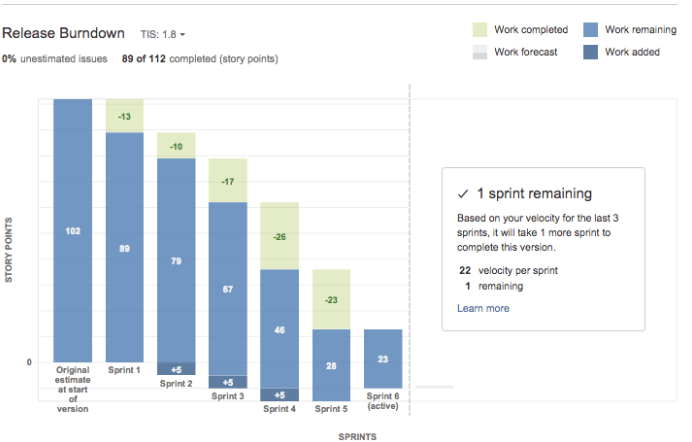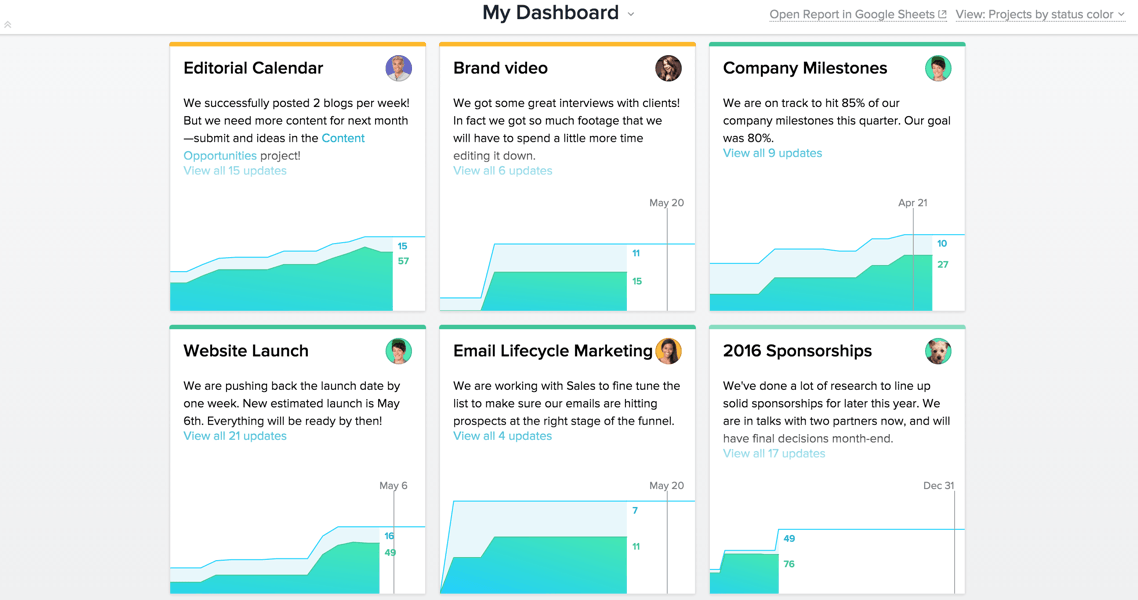Everyone wants to be Agile. But not everyone has a clear understanding of how they’re supposed to make that happen.
One of the key steps is to properly utilize agile project management software.
I know the Agile Manifesto states “Individuals and interactions over processes and tools,” but let me tell you a secret: you can only be as agile as your tools allow you to be.
If you have to dig through spreadsheets to find information, you’re losing hours of work each week. That’s not Agile.
If you have to manually track down project updates because you don’t have a tool where you can find the information, then you’re not really collaborating. And you’re not really Agile.
But if you’re using project management software the right way, it can enable all manner of Agile processes. But you have to adapt the tool to your workflow.
At DePalma, we follow an Agile methodology for both client work and for our own work. And we need our project management software to keep our business running.
Here are three important ways we utilize agile project management software in our work.
Quantifying and estimating work
To win the trust of new clients — and to make sure you don’t create an impossible project plan — it’s imperative to deliver trustworthy estimates of work.
But calculating how long work will take is not an exact science. That’s why the question “How long will this take?” has haunted project managers throughout history.
Agile provides an innovative solution. Instead of using dates to estimate work, we use points to quantify the difficulty of each task. Commonly referred to as story points, these units of measurement refer to a length of time someone spends on a certain task.
The more story points a task requires, the more difficult it is to complete.
What’s more, project management software that’s truly made for Agile work will include native functionality for assigning story points. You should be able to view story points by user as well as by sprint or the period of defined work.

The amount of work in each sprint is defined by the number of story points.
While using story points is still a form of estimation, it is a much more scientific approach than outright guessing.
By explaining this process to clients and showing them how we manage it in our software, we’re able to put their minds at ease and more quickly develop a sense of trust.
Connecting different teams
At DePalma, we often take clients’ ideas from concept to design to code, which is a complex process.
Another major way we utilize project management software is to help team members, and indeed entire teams, collaborate throughout the process.
This is where a digital scrum task board — sometimes referred to as a Kanban board — becomes invaluable.
The design is pretty simple. Cards are used to represent tasks, and they’re moved through different lanes on the board that each correlate to a stage of work.

Behold, the organizational beauty of a scrum board.
Each card can serve as a repository of information for that task. For example, when a developer needs to understand the work that’s been done by the design team on a task, they don’t have to embark on an hour-long search.
They can just reference the card and immediately understand the context of the task.
This use case may sound simple, but software design and development projects can be exceedingly complex. You can’t overlook the details.
Plus, this type of information architecture helps reduce cognitive load for the user. Instead of having to dig through emails, reference spreadsheets, and translate Google docs, our team can easily sort information in place.
Everyone’s life is just that little bit easier, which helps them do better work.
Reporting can help you improve
For an agency, reporting serves several goals.
First and foremost, it helps ensure that we get paid. But it also helps us stay accountable to our goals and prove to the client that we’re improving our efficiency throughout the project.
Reporting further supports the value of story points. For example, we allocate a certain amount of story points to each design or development sprint.
As we progress through the project, we want to increase the amount of story points we complete in each sprint.
Without project management software that’s specifically built for Agile, we couldn’t track this KPI. Which means we couldn’t demonstrate how our efficiency is increasing, or prove why working with a UX agency was the right choice for the client in the first place.

A visual dashboard of work completed versus work planned can be a lifesaver.
Furthermore, we use reporting to refine the accuracy of our estimations. I mentioned that using story points is better than pulling deadline out of thin air, but it’s still a form of estimation.
Detailed reporting functionality helps us refine our estimations by pinpointing where we were inaccurate.
When did tasks get pushed to a subsequent sprint? Why did they happen? By looking at retrospective data, we’re able to uncover the answers and make better estimations for the client.
The right project management software can help your Agile efforts
Of course, these are only a few functions that are available in today’s project management software. But as an agency that has designed and developed applications for both enterprises and startups, these are the most important ways we utilize our software.
Remember, it takes the right structure to be Agile. Chaos is not productive, and not following a process isn’t professional.
If you get a tool that enables your process rather than creating detours, you’ll find that the right tools really do support Agile interactions.
Pavel Bukengolts is the Director of User Experience at DePalma. With over twenty-five years of experience in behavioral design and user experience, Pavel has lead teams on expansive projects for brands like United Airlines, Healthtrust Purchasing Group, and Sitecore.
Learn more about project management software, get expert recommendations, and compare products using our Project Management Product Selection Tool. Our Technology Advisors are here to help you find your next software with recommendations based on your needs. Call now at 877.822.5926.


